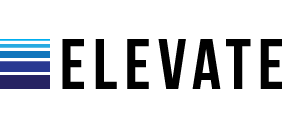18 Feb Elevate Utopia
Recently the discussion of creating sub groups in the Academy to drive individual student growth has come up. This is something I have thought about for a really long time. There were two huge drivers behind this thought process and I will cover those first before discussing a path forward, some of the difficulties, and where I want the academy to head over time.
The Rule of 150 – Sometimes called Dunbar’s Number this is what British Anthropologist Robin Dunbar proposed that this number was the upper limit that a group could sustain social relationships and not require restrictive social laws.
Military Structure – The Marine Corps organizes in a very simple way. 150 people are in a company. There are 3 platoons of roughly 50, 3 squads/platoon of roughly 15, 3 fire teams/squad of roughly 4. You always belong to a smaller unit and therefore you do not end up with one leader handling every issue. Lower level leaders get to develop their leadership style and responsibility, higher level leaders can avoid getting bogged down in day to day smaller matters to achieve larger, big picture goals.
Small Groups at Elevate
So how does this apply to Elevate MMA. From the beginning our mission has been to ignite the spark of the passion for learning, to provide and environment and resources to support that learning, and to constantly push students towards directing their own growth. This will only continue to become even more of the case, but it is a more difficult path.
Traditional martial arts schools operate on a different model. Students are expected to get the majority of their learning from material presented in class. New students come in and the 1st lesson may be on a vast variety of techniques but in time they will see lessons on a plethora of subjects and start to make connections. If they simply show up for class and trust in the material they will eventually get to the point of having a more complete picture.
A small group model would completely change that. Imagine working in a group of partners with roughly the same experience, body type, and goals. Lessons could be customized in a way that would allow material to be presented in a focused manner for that small group.
If you were trying to maximize the potential of each individual student there is no way you would suggest a model where they just show up to class. Many schools offer private lessons, but in many cases that is cost prohibitive for most students. At the best schools these pockets of additional training spring up. Small groups emerge spontaneously and the “competitive blue and purple belts” will get together to get in extra rolls or drill their A game, or the “Older crowd” will find a time to roll light, and do different drilling that is not as taxing. So this structure happens spontaneously. So how do we institutionalize it for everyone?
As far as main categories, currently we have a mix of students pursuing MMA (or a nearly equal blend of striking and grappling), Striking, and Grappling. Within that we have people who prefer Gi or No-Gi, those who want to compete, those who are more interested in fitness or self defense etc. So, for the time being put the onus on yourself to create an ideal environment. That will likely include utilizing some of the current class structure, that will likely include using open mat time wisely, and it will definitely include cultivating relationships with those walking similar paths that you can have a mutually beneficial training relationship with.
Perspective Shift
There are a lot of ways to think about what your monthly dues to the Academy grant you. Access to classes and the time with the instructors is only a part of it. Additional learning resources provided by the Academy are also on a small part. If all that was included was access to the facility and the group how would you structure your training. If we decided to remove classes for 6 months what kind of training schedule would you set up, what resources and people would you seek out to aid your journey.
This to me is the heart and soul of student directed learning. Instructors and classes are only a small piece of the pie of the total journey. The you actively think about where you want to go and what you need to get there the more you can create and ideal learning environment. The only questions are 1) does the academy presently have the resources you need? 2) will you be supported by the instructors and other members? 3) is there a better environment that you could move to that does a better job? At Elevate we work incredibly hard to provide an ideal training environment even in our local area there are a ton of incredible gyms to train at, and that is not including the infinite other possibilities of what to do with your time, money, and resources. So make sure are in the right place and then find ways to invest even more of yourself. I have never seen that investment go unreturned.
The Future
1 year ago D’juan was not teaching at the Academy. 6 months ago we did not have Samantha Faulhaber, and we did not have Kinstretch. 3 months ago Glayton was not teaching. Our Academy continues to grow and as a result there is more and more diversity of instructors, perspectives, and training partners. A year ago I was the only voice and we had roughly 50 students total. Every person who trains with us is influencing the culture and direction of the gym. I am guiding where appropriate, but the correct foundation has been laid and now I am mostly sitting back in awe and wonder at the culture you all have engendered and the drive you are providing pushing us forward. The status quo of how other Academies have been run is not my goal. I want to see us continue to push this experiment even further out and achieve a way of running on a day to day basis that pushed beyond the norm.
Onward and Upward, Continue to Elevate.

